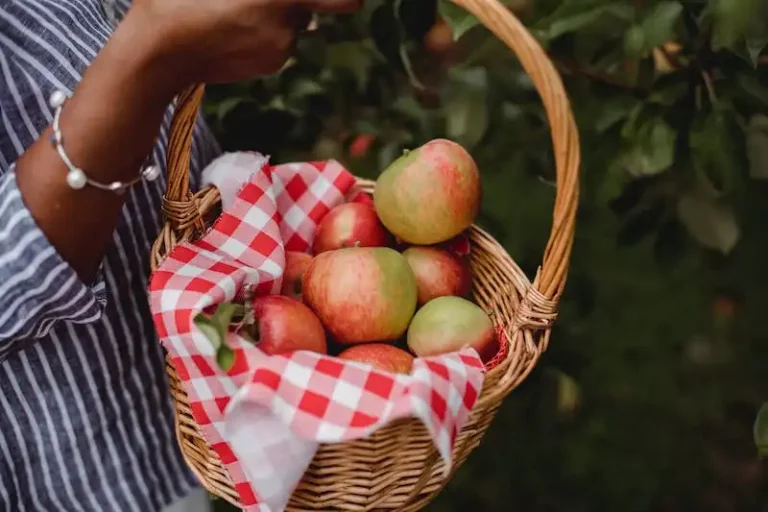Poinsettias are iconic plants that brighten up our homes and bring a festive touch to the holiday season. With their vibrant red, white, or even pink leaves, poinsettias are a popular choice for decorating during the holidays. However, many people struggle to keep these beautiful plants alive and thriving. If you’re wondering how to take care of poinsettias, you’ve come to the right place.
First things first, when you bring your poinsettia home, make sure it’s wrapped in foil. This foil serves two purposes: it protects the plant during transport and helps to create a visually appealing display. However, it’s important to remove the foil when watering the plant, as it can trap excess moisture and lead to root rot.
When it comes to choosing the right spot for your poinsettia, there are a few key factors to consider. Poinsettias are native to Mexico, so they love the warmth and bright light. Ideally, you should place your poinsettia in a well-lit spot, away from drafty windows and direct heat sources. Keep the temperature between 65-75°F (18-24°C) during the day and slightly cooler at night. Poinsettias are sensitive to cold temperatures and frost, so be sure to keep them indoors during the winter months.
As for watering, poinsettias can be a bit finicky. They don’t like to be too wet or too dry, so finding the right balance is key. The general rule of thumb is to water your poinsettia when the top inch (2.5 cm) of soil feels dry to the touch. Be careful not to overwater, as this can cause the roots to rot. On the other hand, underwatering can cause the leaves to wilt and drop. If you’re unsure when to water, a good tip is to stick your finger into the soil. If it feels moist, you can wait a bit longer before watering again.
In addition to proper watering, poinsettias also require regular feeding. They are heavy feeders and need a balanced fertilizer to thrive. You can start feeding your poinsettia in late winter or early spring, just as new growth starts to emerge. A slow-release fertilizer or a well-diluted liquid fertilizer is ideal for poinsettias. Follow the instructions on the fertilizer packaging for the best results.
Poinsettias are known for their brightly colored leaves, but did you know they also produce flowers? The flowers are actually small and yellow, and are surrounded by colorful bracts that resemble petals. If you want to help your poinsettia produce more flowers, there are a few things you can do. First, make sure your plant is getting enough light. Poinsettias need at least 6 hours of bright, indirect light each day to bloom. If your poinsettia is not getting enough light, consider moving it to a brighter location or supplementing with artificial grow lights. Second, poinsettias are short-day plants, which means they need long periods of darkness to trigger flower production. To encourage blooming, keep your poinsettia in a dark room or cover it with a cardboard box for at least 12-14 hours each night. Follow this routine for about 6-8 weeks, and you should start to see flower buds forming.
In conclusion, poinsettias are beautiful and festive houseplants that require proper care to keep them alive and thriving. By following these tips on watering, lighting, feeding, and providing the right environment, you can enjoy the beauty of poinsettias long after the holiday season is over. Remember to remove the foil, water correctly, keep them away from drafts and direct heat sources, and provide the right amount of light and darkness for flower production. With a little love and attention, your poinsettia will reward you with a stunning display of vibrant colors and delicate flowers.
How to Keep Your Christmas Poinsettia Alive
Poinsettias (Euphorbia pulcherrima) are popular holiday plants that can brighten up your home during the Christmas season. To keep your poinsettia alive and healthy throughout the holiday season and beyond, follow these tips:
1. Proper Placement: Poinsettias need bright but indirect light, so place your plant near a window where it can receive plenty of natural light. However, avoid exposing it to direct sunlight, as it can scorch the leaves.
2. Watering: Poinsettias prefer moist but not soggy soil. Check the moisture level of the soil daily and water the plant when the top inch is dry to the touch. Be careful not to overwater, as this can lead to root rot.
3. Temperature: Poinsettias prefer temperatures between 60-70 degrees Fahrenheit during the day and 55-60 degrees Fahrenheit at night. Avoid exposing your plant to extreme temperatures, drafts, or cold air, as they can cause leaf drop.
4. Fertilizer: Feed your poinsettia every 2-3 weeks with a balanced houseplant fertilizer. Follow the instructions on the fertilizer package for proper dosage. Avoid overfeeding, as it can lead to leggy growth.
5. Limit Exposure: Poinsettias are short-day plants, which means they need long periods of uninterrupted darkness to bloom. To encourage flowering, keep your plant in total darkness for at least 12-14 hours each night. Cover it with a box or place it in a dark room. During the day, expose your plant to bright light.
6. Avoid Cold Drafts: Cold drafts can damage your poinsettia, so make sure to keep it away from drafts caused by open windows or doors. Also, avoid placing it near heating vents, as it can cause the leaves to dry out.
7. Poisonous Plants: Poinsettias are often wrongly perceived as highly poisonous plants. While they can cause mild discomfort if ingested, they are not deadly. However, it’s still best to keep them out of reach of children and pets.
By following these tips, you’ll be able to keep your poinsettia alive and enjoy its vibrant flowers throughout the holiday season and longer. With proper care, your poinsettia may even rebloom next Christmas!
How To Keep Your Christmas Poinsettia Alive
If you want to enjoy the beauty of poinsettias throughout the holiday season and beyond, there are a few steps you can take to keep your Christmas poinsettia alive and thriving.
When you bring your poinsettia home, make sure it is well-lit, but not in direct sunlight. Poinsettias need at least 5 hours of natural, indirect light each day. If you can’t provide enough natural light, consider supplementing with proper lighting. A well-lit room, with temperatures between 65 and 75 degrees Fahrenheit, is ideal for poinsettias.
To keep the plant looking its best, inspect it for any damaged or yellowing leaves. If you find any, simply pluck them off. This will help the plant focus its energy on new growth and bloom for a longer period of time.
Watering is crucial for poinsettias. Keep the soil moist, but not soggy. Be careful not to overwater, as this can cause root rot. A good rule of thumb is to water the plant when the top inch of soil feels dry to the touch. If the plant starts to droop or the leaves turn yellow, you may be underwatering. On the other hand, if the leaves start to curl or become mushy, you may be overwatering.
While poinsettias don’t require much fertilizer during the holiday season, a bit of extra care can keep them healthy and vibrant. You can use a general-purpose houseplant fertilizer once a month, following the instructions on the package. Be sure to stop fertilizing after the blooming season is over, usually around March or April.
Keeping your poinsettia at the right temperature is also important. Avoid placing it near drafts or heat sources. Poinsettias prefer temperatures between 60 and 70 degrees Fahrenheit during the day and slightly cooler at night. Extreme temperatures can cause the leaves to drop.
If you’re willing to put in a bit more effort, you can overwinter your poinsettia and enjoy it for another year. After the blooming season, usually in February or March, cut the plant back to about 6 inches tall. Keep it in a well-lit, cool room, with temperatures around 55 degrees Fahrenheit. Water sparingly and stop fertilizing until late spring or summer. With a little bit of patience and some green thumb wisdom, your poinsettia can be successfully rebloomed for the following year.
With proper care and attention, your Christmas poinsettias can last beyond the holiday season, bringing beauty and festive cheer to your home. So take the time to read our care guide, and make sure your poinsettias are well taken care of this year.
1 Keep your Poinsettia Cosy
When it comes to taking care of your poinsettia, there are a few important steps to follow to ensure a good and healthy life for this beautiful Christmas flower.
- Gradually adjust to indoor conditions: If you must keep your poinsettia outdoors, gradually transition it to indoor conditions over a period of 1-2 weeks before the holidays.
- Know how to water: Poinsettias are sensitive to excess water. Water the plant thoroughly, allowing the excess to drain out from the bottom. Always empty the drainage tray to avoid water sitting above the roots.
- Provide proper humidity: Poinsettias thrive in a humid environment. Placing a tray filled with water and pebbles below the pot can help increase humidity around the plant.
- Avoid cold drafts: Poinsettias are tropical plants and are sensitive to cold drafts and frost. Keep them away from windows, doors, and other areas where they may be exposed to cold air.
- Give them enough light: Poinsettias love bright, indirect sunlight. Place them near a window where they can receive at least six hours of bright light each day. They will benefit from some darkness too, as they need about 12-14 hours of darkness to trigger blooming.
- Keep them away from pets: Poinsettias are poisonous to cats and dogs. Ensure they are placed in an area where your pets cannot reach them.
- Feed them regularly: Poinsettias are heavy feeders. Use a balanced liquid fertilizer every 2-4 weeks during the growing season to keep them healthy and promote blooming.
- Provide proper temperature: Poinsettias prefer temperatures between 65-75°F (18-24°C). Avoid placing them in areas where the temperature fluctuates significantly.
- Keep them away from appliances: Appliances that emit heat, such as TVs or stoves, can cause the leaves to wilt and drop. Keep poinsettias away from these heat sources.
- Prepare for reblooming: If you want your poinsettias to rebloom next year, follow the proper care guide after the holidays. Reduce watering and stop fertilizing while keeping the plant in a cool, dark place to encourage dormancy.
By following these tips and tricks, you’ll be able to keep your poinsettia alive and well throughout the holiday season and beyond.




